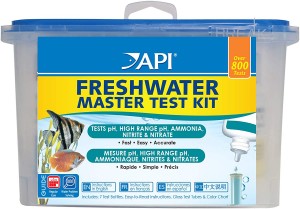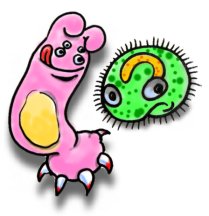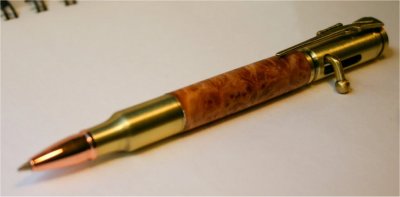INTRODUCTION
In the preparation of this topic, I am putting forth the most common causes of retail loss of fish, with a general but loosely applied outline of information that may be useful to you, and possibly to your customers.
SHIPMENT/ACCLIMATION
There is alot to say about this subject, but in four pages, I’m going to touch on two high points.
First. Get the fish back to your shop and into your tanks as soon as possible. After floating the fish for ten to fifteen minutes, net them out of the bags into the tanks but do not let the bag water enter your system. Two principle reasons are that the water may hold concentrated numbers of parasites which may be left behind, and secondly the water may hold high Ammonia levels which your filtration system could be spared. Aeration should be stout as the fish will be blowing off major amounts of carbon dioxide.
Second. Triage the fish; which means note the condition of the bagged fish and let out the struggling ones first. I used to work at a major fish retailer and their great expertise was in the area of killing fish, and one way they did that was by opening the bags without regard to content. Look at the bags as they are floating in your systems and open the bags that have the most stressed fish.
Retailers could cut losses by knowing their water quality all the time.
Very successful stores have a protocol of daily measurement, and recording of; pH and Ammonia. Marine shops do well to also measure their Copper levels daily to be sure they remain in the therapeutic ranges. Marine shops should know their Total Alkalinity and Specific gravity from day to day as well. Some marine shops even take it several steps further with “ORP readings” done on the same machine that reads “Lucky Leprechaun Levels”.
pH
pH required for life lies between 5.5 and 8.5. Individual species will have varying demands as far as pH. Ignorance of the requirements of each species will result in the death of the animal in question. Retailers who divide their fish into water types will have fewer losses in the store, and fewer fish to replace for the hobbyist.
 I suggest a soft acid water bank of tanks for the South American fishes, such as tetras, Discus, Angels, Rams, cichlids and some barbs. I suggest a Neutral buffered system for all the bread and butter fishes like Danios, hardy cichlids, Goldfish, alot of the barbs, Koi and etc. Finally, a third division in the store for Hard Alkaline water fishes to include the following three classes: Brackishwater fish, Livebearers and African Cichlids.
I suggest a soft acid water bank of tanks for the South American fishes, such as tetras, Discus, Angels, Rams, cichlids and some barbs. I suggest a Neutral buffered system for all the bread and butter fishes like Danios, hardy cichlids, Goldfish, alot of the barbs, Koi and etc. Finally, a third division in the store for Hard Alkaline water fishes to include the following three classes: Brackishwater fish, Livebearers and African Cichlids.
Retailers kill a PILE of Platies, Mollies, Swords and Guppies every year in spite of the fact that these livebearers can grow as big as trout and tend to resist everything when kept in hard alkaline water under a little (2 teaspoons per gallon) aquarium salt! The “Buffer Boys” (Seachem and Kent) have perfected powdered buffers that are economical and effective at hedging the pH and alkalinity into the desired ranges for all three divisions of fish.
You should hopefully be able to see how a community tank with a Discus and a Sailfin Molly is likely to be a major disappointment to someone.
There is a routine, inexpensive test that measures pH, and compares the result to a color chart for the diagnosis.
pH impacts fish in several ways. First, if the pH is too low, a condition called Acidosis results. Symptoms are anorexia, and then production of excess slime, isolation, and resting on the bottom, finally, streaking of the fins, and death will occur.
If the pH is too high, the fish will produce excess slime, and will gasp at the surface. Losses can be major. Alkalosis is hard to reverse once it occurs.
On the other hand, Acidosis is rapidly corrected once the pH is brought up to a suitable range.
pH contributes to the toxicity of Ammonia. At higher pH values, ammonia is more toxic. Below pH 7.2 most Ammonia is ionized to Ammonium and is far less toxic. This has relevance if you are considering raising the pH in a system with accumulating ammonias.
Retailers lose fish all the time to:
CILIATE PARASITES – [RUN CONTINUOUS SALT!]
 For a quick kill and some real sadness, invite Chilodinella or Costia into a freshwater tank and stand back while all the fish die in 24-36 hours. Successful retailers have worked out a system by which they can maintain a little salt in all their freshwater tanks to control these parasites. Stores that do not run salt are at the mercy of their shippers to send perfect fish every time.
For a quick kill and some real sadness, invite Chilodinella or Costia into a freshwater tank and stand back while all the fish die in 24-36 hours. Successful retailers have worked out a system by which they can maintain a little salt in all their freshwater tanks to control these parasites. Stores that do not run salt are at the mercy of their shippers to send perfect fish every time.
Salt knocks off the following baddies:
Ichthyophthirius (White spot gone in 48 hours) Chilodinella, Costiasis (Ichthyobodo necatrix) Almost every single Trichodiniid/Tripartiella organism. Glossatella, Scyphidia, Epistylis, Trichophrya, External Tetrahymena, Inhibits trematode (fluke) reproduction, clears 30% of adults. Inhibits Lerneiid reproduction.
Using Salt: Remove submerged live plants. Perform a fifty percent waterchange if possible, and clean the system as well as reasonably possible without causing undue delay in treatment. Apply one teaspoon of non iodized table or aquarium salt per gallon of water every twelve hours for three treatments ( eventual dose totals three tsp per gallon). Alternatively, for larger systems, dose one pound per hundred gallons of water every twelve hours for three treatments (three pounds per hundred gallons). Add all at once in the case of epidemic mortality.
TREMATODE PARASITES/FLUKES

Flukes are the NUMBER ONE cause of Ulcer Disease in Koi and Goldfish. They are the principle vector of Aeromonas from fish to fish! Freshwater flukes occur in all parts of the world on numerous species of fishes. By their name, you might expect them to be visible to the naked eye, however, they are microscopic.
Flukes are easy to diagnose microscopically. A skin scraping should be taken with a plastic coverslip from under the chin, between the gill covers. Another sample should be collected from the side of the body; scraping from there and out onto the tail and off the tip. The mucus is placed with a drop of pond water on a slide an viewed at 40x total magnification with the iris diaphragm closed down, and lighting low enough for comfort. You should see ‘wormy’ looking organisms. Usually they are extremely active. They are capable of elongating and contracting with both amazing speed and dramatic agility. Especially in water containing 0.3% salinity, usually flukes are all you could hope to see because the other types of parasites (ciliated protozoans) are annihilated by that salt level.
Their primary mode of killing would ostensibly be through the accumulation of large numbers. Especially in fish fry, the numbers of flukes encountered are accepted as the cause of mortality simply because they take such a toll on the victim when they occur in large numbers. Based on observations made in practice, however, I would like to introduce my opinion of how just a few flukes can kill a larger fish.
In the process of attacking a host, the flukes dig deeply into the epidermis and gill tissue with their haptens. Regardless of species, the flukes are known to carry and inoculate pathogenic bacteria. Flukes from certain areas, and on certain batches of fish carry more and more dangerous and virulent bacteria on their haptens. In this way, discovery of a few flukes on the gills or skin can account for rapid and mortal outbreaks of Aeromonas and Pseudomonas furunculosis (Ulcer Disease).
Control of flukes has become increasingly easy with contemporary medicine. PRAZI PRO is so easy.
Potassium permanganate has been shown to be effective when applied as an eight hour bath at one gram per hundred gallons (2 ppm) or when dosed daily at 2 ppm for five days consecutively. Alternatively, some have found that despite it’s negative effects on fish and filter, that Formalin is effective in eradication of fluke adults, with a second treatment (three days later) serving as clean-up for the emerging young.
LARGE PARASITES
Simple. When you see large parasites like Argulus (Fish Lice) or Anchor Worms (Lernea) you need to apply DIMILIN at one gram (one shallow teaspoon) per thousand gallons and these parasites are gone within 3 days. (Dimilin is found in THIS PRODUCT Cyropro)
BACTERIAL INFECTIONS
If and when you see fish with rotting mouths, fins, and skins, it’s bacterial. You can also assume that the fish have parasites because *that’s* how the bacteria got from fish to fish!
There are four concepts to understand concerning fin rot.
First, finrot is usually a bacterial infection which results from any one of four causes,
1. Fin nipping
2. Parasites like Flukes or Ich inoculating pathogenic bacteria into the skin
3. Deteriorating water quality, inadequate filtration, or high bacterial counts in the water because a hobbyist is not using an undergravel plate and the gravel bed has become stagnant.
4. Poor nutrition
Second concept:
To recover fish, water quality must be corrected even if you start using antibiotics to kill the primary bacterial invader. Remember that most any treatment you might use for pathogenic bacteria will likely also affect your nitrifying (filterbed) bacteria and this can, in loaded systems that are already barely keeping up, cause Ammonia or Nitrite accumulations. If you wreck your filter, no biggie, just BioSeed it.
Third Concept:
Treat in a hospital tank. A ten gallon with a hood, a heater at about 78 degrees, and a sponge filter all cycled and ready. Treat with Trimethoprim Sulfa 960mg in ten gallons of water made fresh daily for 6 hours a day for three days. Alternative drugs would be any of the Furan antibiotics (Furazone Green® is excellent) or even possibly, as a very last resort, Maracyn from Mardel “Labs”. Treating in the main system will PROBABLY land you in new water quality problems because most medications that kill bacteria on fish also kill nitrifying bacteria.
Fourth Concept:
Nutrition is best supplemented with live or fresh frozen foods fed from a basket feeder. How you feed it makes a difference because from a basket feeder, there is little waste, and fewer food morsels are lost in the tank, therefore water quality does not deteriorate, bacterial numbers do not skyrocket, and fish are capable of recovery. Good choices are frozen Brine Shrimp Plus, or plain brine shrimp, blood worms or maybe Prime Reef.
So, for finrot, consider an overhaul of the system to optimize water quality. Consider removing affected specimens to a hospital tank and treating there. Consider a basket feeder and varying the diet.
FUNGAL INFECTIONS
Fungal infections of ornamental fish are usually caused by Saprolegnia, a common, if not ubiquitous fungus. NEVER has Saprolegnia struck where there was not SOME sort of stressor. Diagnosis is by microscopy, and this is important, as very often, Flexibacter columnaris will look (to your eye) just like this, and it will not respond to anti fungal agents, because IT is a bacteria!
Treatment of fungal infections is only possible where immaculate water quality (including hospitable temperatures) and good diet prevails. Then, a variety of drugs are effective, to include my favorite, Methylene Blue. Potassium permanganate effectively kills fungi, perhaps better than anything. Instructions for the use of Potassium are found elsewhere on my Web Page
Question: Should I freshwater dip all incoming saltwater fish?
Answer: I personally would dip any saltwater fish that I had learned over time could handle it and especially those going into my well stocked reef tanks which are not easy to treat for a systemic parasite. Or better yet, I would develop some skills with the microscope and scrape a few incoming to see if they “carry” but I would always hedge my bets in systems *without* invertebrates, sharks or rays, with my common “bread and butter” marines by running copper (very specifically Seachem’s Cuprimine) 24&7 and checking copper often, to be sure that I did not keep or sell a diseased fish.
Question: I got some marine fish and they got white patches on them. Then they died. I saw it first on my Clowns. What was that?
Answer: Probably Uronema. Freshwater dips would check that parasite initially, then low level Copper (in the absence of inverts) would keep it at bay. It’s very common.
Question: Should I run ionic copper or a chelated Copper in my Marine systems?
Answer: There is no “right” answer but if it were my store, I would hire a marine biologist or chemist and run ionic copper. It’s more effective and quite good. Since I could not afford a marine biologist or chemist, I would use one of the partially chelated Coppers, like SeaChem’s Cuprimine. It’s only bound on two ionic points instead of all four so it remains pretty deadly to parasites without pushing your buttons in the toxicity or risk department.
Question: I’d like to learn more. Do you have a book?
Answer: I am glad you asked. Yes, I do. (Here it is, Overnight delivery even)
Question: Should I salt all my freshwater fish?
Answer: Salt has been reported in some instances to cause health problems for the following fish:
1. Wild caught Discus. (Captive born specimens have no problem at all.) 2. Brokis britskii catfish 3. Otocinclus
4. Rafael Catfish 5. Ram Cichlids 6. Neon tetras 7. Cardinal Tetras 8. Rainbow and Redtail sharks ship poorly in salt but the divided dosing schedule has alleviated alot of these problems, but use salt at your own risk in these cases. Sometimes the numbers of fish you have from these groups make them somewhat “expendable” in the interest of saving the other fish.
Question: Why can’t I keep Blue or Yellow Tangs alive? I get them in and they’re dead in two weeks!
Answer: Like quite a few imported marine fish, they are vegetarian, and they need copious amounts of plant matter in their diet. These fish in the wild don’t elect to eat brine shrimp. They are plant and algae grazers and eat constantly like cows. You can increase your success rate with caulerpa or dark greens weighted to the bottom. Now there are vegetarian frozen foods that work, too. Some Tangs carry Hexamita. Metronidazole works well, 500mg per ten gallons in a holding system over night.
Question: Do you still see fish dying of cyanide collection? It’s been outlawed you know.
Answer: Yes, I do. The natives just keep the cyanide or quinaldine in their boats and no one’s asking.
.
.
.
.







